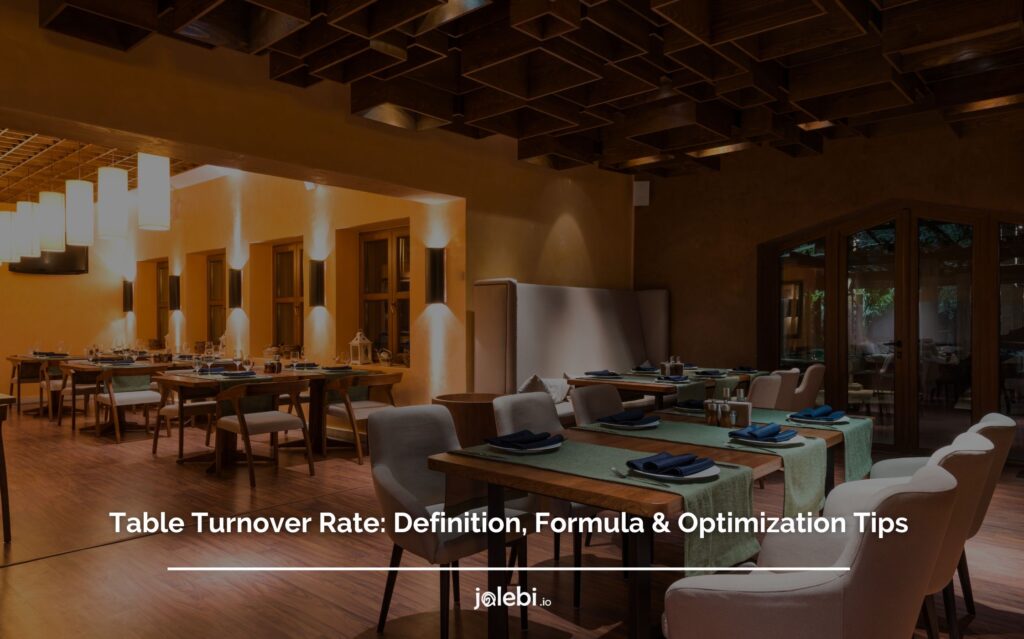Table of Contents

In the ever-evolving restaurant industry, doing proper restaurant financial analysis is key to success.
In 2022, restaurants generated average revenue of $1.5 million, highlighting the immense potential for growth and profitability.
To navigate this dynamic environment, restaurant owners and managers like you must prioritize restaurant financial analysis as a crucial component of their management strategy.
By delving into the intricacies of revenue, costs, and profitability, you can uncover insights to boost margins and optimize operations.
In this blog, we explore the importance of restaurant financial analysis and how it empowers businesses to make informed decisions, identify growth opportunities, and maximize their bottom line.
Join us on this journey to discover how mastering the art of restaurant financial analysis can pave the way for sustainable success in the competitive restaurant landscape.
What Is Restaurant Financial Analysis?
Restaurant financial analysis refers to the process of examining and evaluating the financial data and performance of a restaurant to gain insights into its financial health, profitability, and overall financial management.
It involves analyzing various financial statements, such as income statements, balance sheets, and cash flow statements, to understand the revenue, expenses, profit margins, and cash flow patterns of the business.
Ultimately, financial analysis provides the necessary insights to drive financial decision-making, growth plan, and ensure long-term success in the highly competitive restaurant industry.
Importance Of Finance In Restaurants

Effective financial management is essential for the success of any restaurant.
Proper management of finances in restaurants ensures stability, profitability, and sustainability in an industry known for its competitive nature and slim profit margins.
From budgeting to cost control, financial strategies play a pivotal role in guiding decision-making and driving overall business performance.
1- Budgeting and Forecasting
Finance allows restaurants to develop comprehensive budgets and forecasts.
This involves considering factors such as ingredient costs, labor expenses, overheads, and sales projections.
When creating budgets and forecasts, restaurants meticulously analyze historical financial data, market trends, and operational insights to make accurate predictions.
They assess the costs of ingredients, taking into account market fluctuations and supplier pricing.
Labor expenses are carefully evaluated, considering factors like staffing levels, wages, and benefits. Overheads, including rent, utilities, insurance, and maintenance, are taken into account as well.
Additionally, sales projections are made based on historical data, market demand, seasonality, and marketing efforts.
2- Cost Control
Financial management plays a critical role in monitoring and controlling costs across various aspects of the business.
By keeping a close eye on ingredient costs and market trends, restaurant owners and managers can make informed decisions about sourcing ingredients at competitive prices.
This includes analyzing ingredient prices, negotiating with suppliers, optimizing inventory levels, and implementing cost-saving measures.
By effectively managing costs, restaurants can maintain profitability, even in a competitive market where pricing pressures exist.
3- Pricing Strategy
Finance is instrumental in determining the optimal pricing strategy for menu items. It involves analyzing ingredient costs, overheads, competition, and customer preferences.
By considering these factors, restaurants can set prices that strike a balance between profitability and affordability.
This strategic pricing approach maximizes revenue while meeting customer expectations, driving overall financial performance.
With jalebi’s sales data visualizations, restaurants can gain valuable insights to determine the right pricing strategy for their products and services.
The data visualizations provide a clear and intuitive representation of sales trends, customer behavior, and market dynamics, allowing restaurant owners and managers to make informed pricing decisions.
4- Cash Flow Management
Effective financial management is essential for ensuring proper cash flow within a restaurant.
It involves closely monitoring the inflow and outflow of cash, managing accounts receivable and payable, and maintaining sufficient working capital.
To effectively manage cash flow, restaurants need to closely monitor their income and expenses. This includes tracking sales revenue, analyzing the sources of income, and identifying areas where revenue can be increased.
On the expense side, restaurants must carefully manage their costs, including food and beverage costs, labor expenses, rent, utilities, and other operating expenses.
By keeping a close eye on income and expenses, restaurants can identify any discrepancies or potential issues and take corrective measures to maintain a healthy cash flow.
Managing accounts receivable and payable is another critical aspect of cash flow management. Restaurants must actively monitor and collect payments from customers, ensuring that invoices are sent promptly and follow-up is conducted when necessary.
On the other hand, they should also effectively manage their accounts payable by paying suppliers on time and negotiating favorable payment terms.
By optimizing accounts receivable and payable, restaurants can minimize delays in cash inflows and outflows, ensuring a smoother cash flow cycle.
5- Financial Performance Analysis
Another important point to consider while conducting the financial analysis of a restaurant business plan is financial performance analysis.
Regular financial analysis provides valuable insights into the restaurant’s performance. This includes analyzing revenue trends, profit margins, return on investment, and key financial ratios.
Overall, regular financial analysis empowers restaurants to make informed decisions, identify areas of improvement, and drive continuous growth.
By monitoring revenue trends, profit margins, ROI, and key financial ratios, restaurants can optimize their financial performance, improve operational efficiency, and position themselves for long-term success in the competitive restaurant industry.
By leveraging finance in restaurants, owners and managers can make informed financial decisions, improve operational efficiency, maintain financial stability, and maximize profitability in an industry known for its challenges.
Restaurant Financial Analysis Example On How To Conduct Financial Analysis

Here’s a restaurant financial analysis example to help you sort your restaurant’s finances out.
- Analyze Revenue and Sales
Let’s say you’re analyzing the financial performance of a restaurant for the past year.
You start by reviewing the revenue streams, such as dine-in sales, takeout orders, and catering services.
You compare the revenue generated from each stream to identify the most profitable ones.
- Assess Cost of Goods Sold (COGS)
Next, you delve into the cost of goods sold (COGS), which includes the cost of ingredients and raw materials used in food preparation.
You calculate the gross profit margin by subtracting the COGS from the revenue and expressing it as a percentage. This helps you assess the efficiency of your food cost management.
- Evaluate Operating Expenses
Moving on to labor costs in the restaurant financial analysis example, you analyze payroll expenses, including wages, benefits, and overtime pay.
You calculate labor cost as a percentage of total revenue to evaluate if it aligns with industry benchmarks.
This analysis helps you identify opportunities to optimize staffing levels and control labor expenses.
- Calculate Profitability
Finally, you evaluate the profitability of the restaurant by calculating the net profit margin.
This is done by deducting all expenses, including COGS, labor costs, and operating expenses, from the revenue.
The net profit margin provides insights into the overall financial performance and helps you gauge the profitability of your restaurant.
Final Thoughts
In conclusion, financial analysis plays a crucial role in restaurant management.
In 2022, the average profit margin for restaurants stood at 10.6%.
This figure serves as a benchmark for restaurant owners and operators, helping them evaluate their own profit margins and gauge their performance against industry standards.
By analyzing and understanding their profit margins, restaurants can implement strategies to optimize costs, enhance operational efficiency, and increase profitability.
It’s important for restaurant owners to regularly conduct financial analysis, track key performance indicators, and take proactive measures to improve their profit margins.
By doing so, they can not only sustain their business but also position themselves for long-term success in a competitive industry.
Frequently Asked Questions
- What’s the best way to conduct financial analysis of a restaurant business plan?
The best way to conduct financial analysis of a restaurant business plan is to thoroughly analyze key financial components, such as revenue projections, cost structures, profitability measures, and cash flow projections.
Start by reviewing historical financial data, including sales trends and expense patterns. Then, develop realistic revenue forecasts based on market research and industry benchmarks. Assess the cost structure by analyzing ingredient costs, labor expenses, and overheads.
Calculate profitability metrics like gross profit margin, net profit margin, and return on investment.
Finally, create cash flow projections by considering cash inflows and outflows. Utilize financial analysis tools, such as spreadsheets or financial software, to perform calculations, track financial performance, and conduct sensitivity analyses.
Regularly review and update the financial analysis to reflect changes in the business environment and ensure the plan remains financially viable.
- Why is contribution margin important to restaurants?
The contribution margin is important to restaurants as it helps assess the profitability of individual menu items or product categories.
It represents the portion of revenue that contributes to covering fixed costs and generating profit.
By calculating the contribution margin, restaurants can identify which items are the most profitable and make informed decisions regarding pricing, menu engineering, and cost management.
- Why is margin more important than profit?
Margin is more important than profit because it provides a clearer picture of a business’s financial health and operational efficiency.
Profit represents the total amount of money earned after deducting all expenses, while margin measures the percentage of revenue that remains as profit after deducting costs.
Margin focuses on the relationship between revenue and expenses, allowing businesses to assess their profitability on a relative scale.
A high margin indicates that a business is effectively managing costs and generating substantial profit from each unit of sale. It also provides insight into pricing strategies and the competitiveness of the business.
By focusing on margin, businesses can identify areas for improvement, optimize pricing and cost structures, and make informed decisions to maximize profitability.
Margin analysis enables businesses to evaluate their financial performance in a more meaningful way and provides a foundation for sustainable growth and financial success.
Read more:











